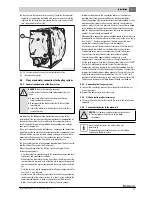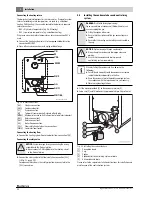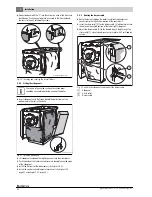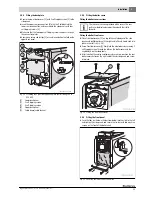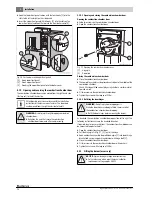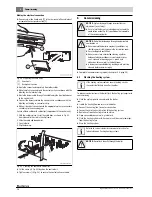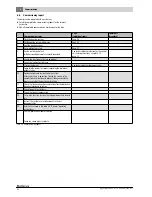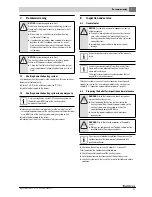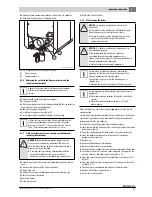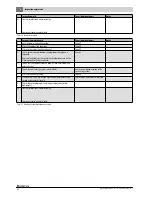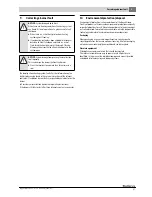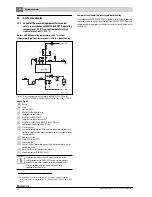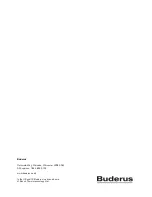
8
Inspection and service
Logano plus SB325 – 6 720 806 328 (2013/07)
32
8.3
Cleaning the boiler
8.3.1
Preparing the boiler for cleaning with brushes
▶ Remove upper and lower front panels.
▶ Remove the front thermal insulation.
▶ Undo the door bolts and open the combustion chamber door.
Fig. 36 Remove the front panel and thermal insulation
▶ Loosen nuts from the clamping angle, swivel the clamping angle away
and remove the return bonnet.
Fig. 37 Removing the reversing chamber door and opening the
combustion chamber door
8.3.2
Cleaning the boiler with cleaning brushes
▶ Clean the heating surfaces of the combustion chamber with the
cleaning brush.
▶ Feed brushes through the secondary heating pipes.
Fig. 38 Cleaning the combustion chamber with a cleaning brush
8.3.3
Cleaning the flue gas collector
To be able to remove combustion residues from the flue gas collector,
remove the cleaning cover. This is located on the back panel.
▶ Undo the wing nuts on the cleaning cover [1] and remove the cleaning
cover.
WARNING:
Risk of injury through combustion chamber
door dropping when opened!
▶ Make sure that both hinge pins (
Fig. 12, [1],
page 18) are inserted.
NOTICE:
Boiler damage due to not using the appropriate
cleaning equipment.
▶ Only use the manufacturer's own cleaning equipment.
6 720 804 349-07.1ITL
NOTICE:
System damage through using incorrect
cleaning equipment.
▶ If cleaning with a brush, use only genuine cleaning
brushes from the manufacturer.
▶ When cleaning only use brushes made of nylon or
stainless steel with a stainless steel handle.
If you do not push all the bristle part of the cleaning brush
(
Fig. 38) right through the secondary heating pipe,
you will find it very difficult to get the brush out of the
pipe.
▶ Push the bristle part of the cleaning brush right
through the secondary heating pipe until the bristles
emerge at the other end of the pipe.
NOTICE:
System damage through faulty seals
▶ Check gaskets on combustion chamber door and
replace if required.
▶ Gasket in the door for the reversing chamber must be
replaced during every service (
chapter 8.3.4,
page 33).
DANGER:
Risk to life through poisoning!
Open connections or siphons not filled with water can
cause a through from escaping flue gas.
▶ Fill the siphon with water.
▶ Ensure that the siphon and flue gas connections are
sealed.
▶ Ensure that the sealing washer with gasket is seated in
the cap.


